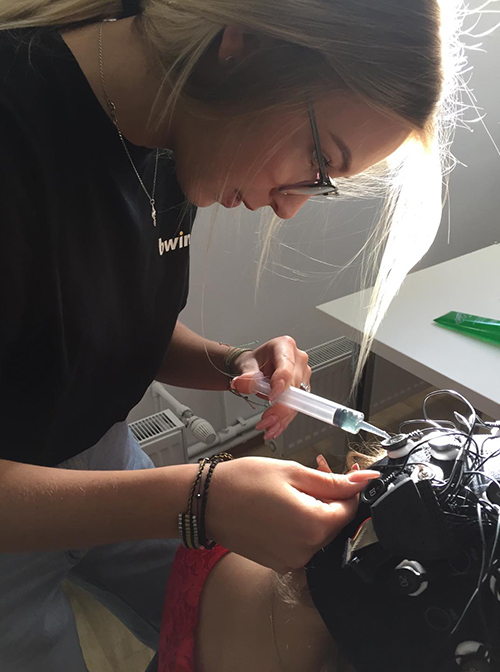PoeticA - Universality of Aesthetic Experience in Individual Contexts
General Objectives:
- To provide an interdisciplinary understanding of the reward mechanisms underlying the human capacity to experience art through rhythm and symmetry;
- To generate new insights into the neural correlates of rhythmic structures and features of poetry and visual arts;
- To develop new theoretical frameworks for exploring the complexity of rhythmic processes and symmetry across the disciplines of literary studies, visual arts, and neuropsychology.
Our Hypotheses:
Hypothesis 1: We enjoy poetry partly because we experience pleasure induced by reward mechanisms which rely on (1) the predictability of re-occurring rhythmic patterns; and (2) solving rhythmic complexity. This is a biological universal of aesthetic experience.
Hypothesis 2: We enjoy poetry because it helps us simulate and anticipate rewarding ideomotor scenarios of behaviour. This is a biological universal of aesthetic experience with culturally specific triggers.
Hypothesis 3: We enjoy that poetry which best helps us cognitively and emotionally to cope with the world we live in, in given time and space. This leads to establishing cultural universals (patterns that continue to help long after they were created).
These hypotheses are being tested in relation to W. B. Yeats’s poetry collection, The Tower (1928). Testing hypotheses 1 and 2 does not require a specific poetry selection. Rather, a randomly allocated set of texts is advisable, and The Tower is as good as any other. However, importantly, The Tower was selected also because it reflects on questions of cultural adaptation and survival when two equally viable contexts exist: one of Irish nationalism based on rural traditions, the other of British cosmopolitan liberal capitalism based on industrial progress. Seldom does one come across such ‘befitting emblems of adversity’, as Yeats calls them, able to reflect from the vantage point of the future on how poetry helped simulate and select behaviour options. And thus the project is the first analysis of any of Yeats’s poetry in an interdisciplinary framework of neuroaesthetics and literary studies.
The fact that rhythm is a supervenient process for both recitation and visual arts has been grasped since ancient times: in ancient Greek, rhuthmós meant symmetry as well as flow. Flow of processing is at the heart of aesthetic experience. Rhythm and symmetry are factors that create flow of processing. In real life situations, people either read poetry (reciting it to themselves) or hear it recited. Our research takes into account not only the situation of hearing recited poetry, but also the situation of individuals interacting with a reciter, where most of the participants’ attention is directed at the reciter’s face. This involves cognitive and affective responses determined by face processing. To study these responses, we will focus on symmetry in portrait images and painting in order to test two hypotheses that are complementary to the hypotheses 1-3 above.
Hypothesis 4: We enjoy portraits partly because we experience pleasure induced by recognising ourselves in another’s face, and partly because of reward mechanisms implicated in the processing of faces. This is a biological universal of aesthetic experience the implementation of which depends on culturally determined attractiveness, trustworthiness, and familiarity.
Hypothesis 5: We enjoy those portraits and architectural ensembles which best help us cognitively as well as emotionally to cope with the world we live in, in our situation in time and space. This leads to establishing cultural universals (patterns that continue to help in similar circumstances long after they were created).
These hypotheses suggest that aesthetic experience depends on biological universals as well as socio-cultural forces, and is a resultant of both. The validation of the hypotheses would support the philosophy of cosmopolitanism, lending scientific credibility to its tenets that while there exists a diversity of socio-cultural manifestations of human identities, there also exists a common base from which all humans look at themselves, the world, and each other, which unites us. Hence, our qualitative
Hypothesis 6: We tend to value tolerable deviations from symmetry which help us to evolve, a perspective consistent with evolutionary as well as developmental theories. In short, biological universals tend to favour cosmopolitanism over nationalism.
Our planned collaborative funding applications will take these insights forward to look at the matrixial structuring of aesthetic experience in developmental/evolutionary perspectives. Hence, our
Follow-up hypothesis: We enjoy portraits and poetry because they help us simulate and anticipate rewarding ideomotor scenarios rooted in primary process empathy and closeness, a biological universal with culturally specific triggers.



